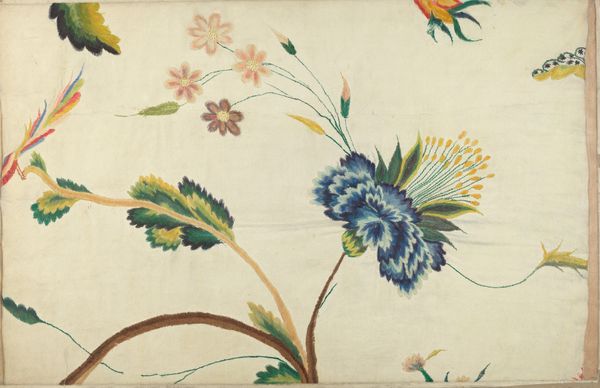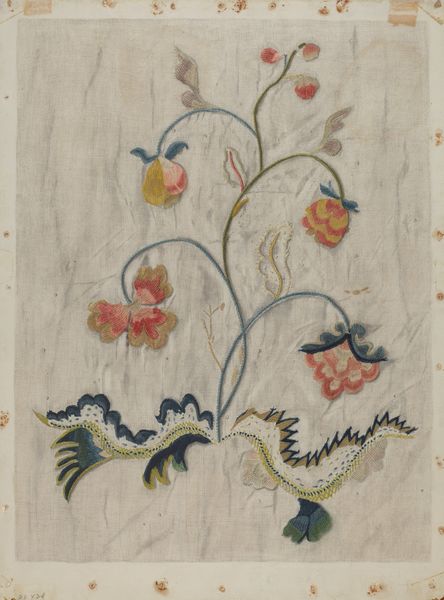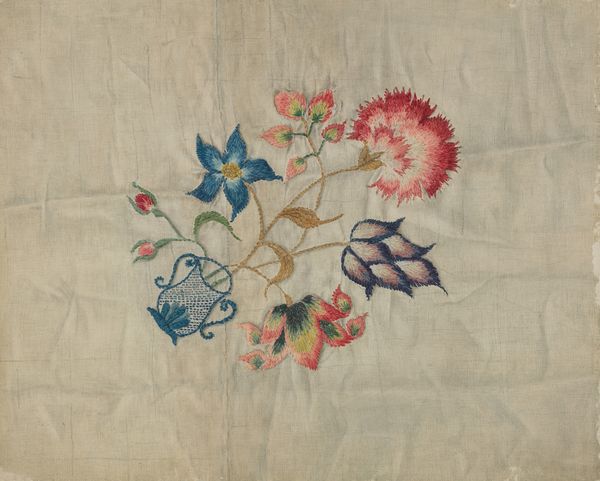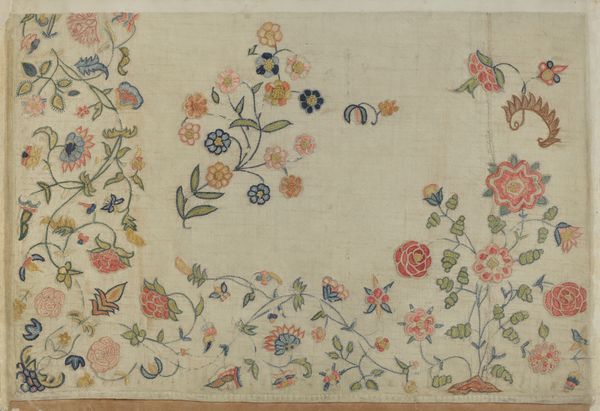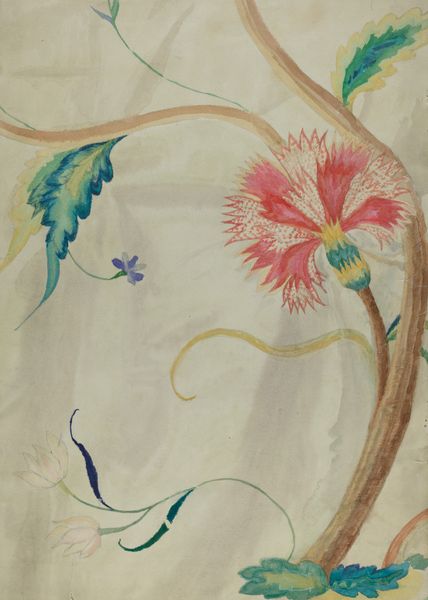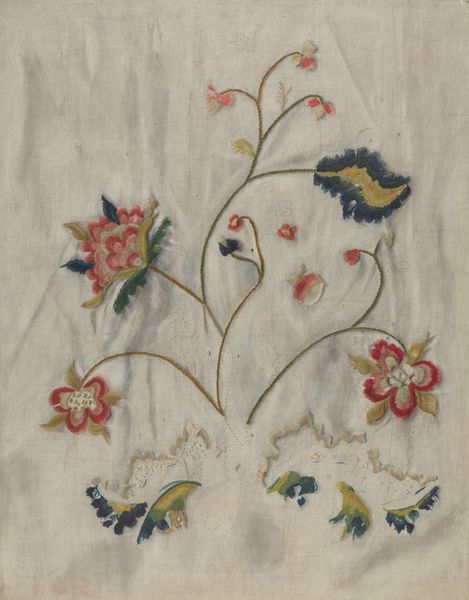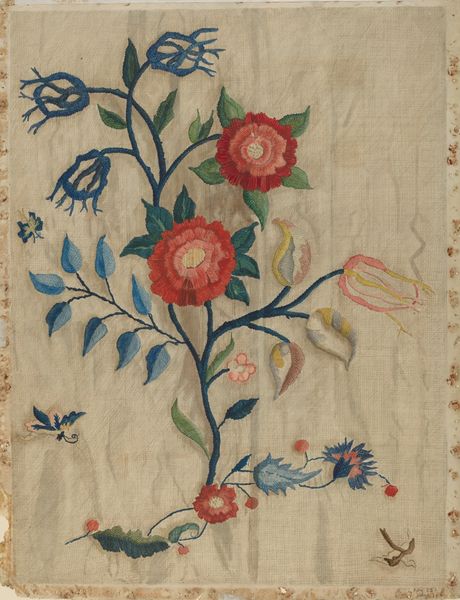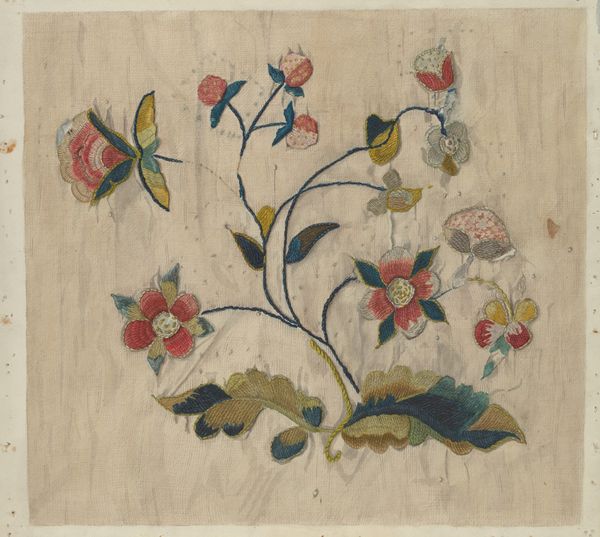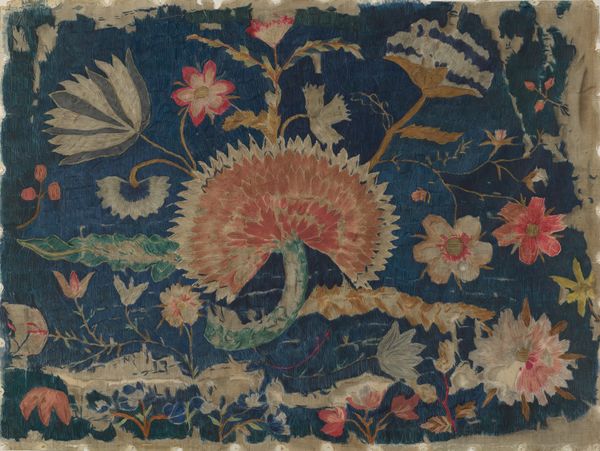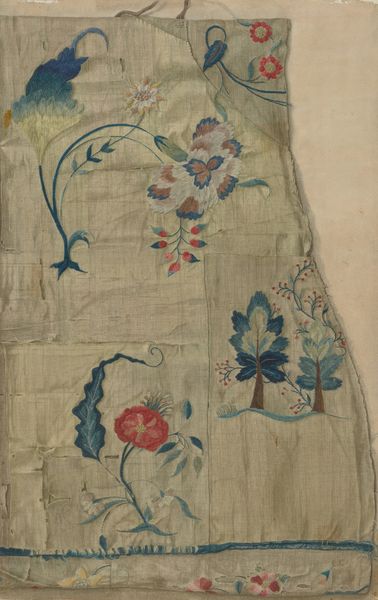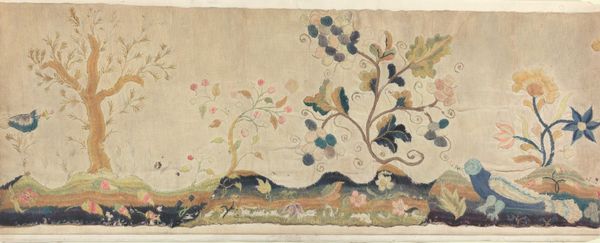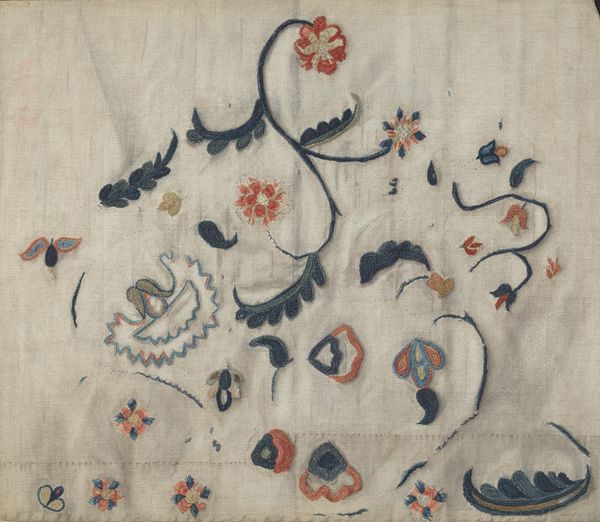
fibre-art, textile, watercolor
#
fibre-art
#
water colours
#
textile
#
watercolor
#
decorative-art
#
watercolor
Dimensions: overall: 41.5 x 52.8 cm (16 5/16 x 20 13/16 in.)
Copyright: National Gallery of Art: CC0 1.0
Curator: Look at this, it is Crewel Embroidery created between 1935 and 1942, likely by the talented Phyllis Dorr. It's a delightful riot of stitched flora, isn't it? Editor: It reminds me of grandma's tablecloth—not in a bad way, though. There's something comforting in the scale and deliberate craft of it, like it wants to envelope you. How exactly was this made? Curator: Crewel embroidery uses wool thread to create raised designs on a woven cloth. If you look closely, you will see many textures that she creates with different stitch patterns. Editor: The choice of textile is interesting. Given its creation during the Depression era, one wonders about the availability of materials and if repurposed fabrics played a part. It highlights a focus on utility, while this elaborate decorative artwork also celebrates the process of textile production and handicraft during mass industrialization. Curator: Absolutely, these pieces whisper stories of resilience. The floral designs remind me of the untamed gardens, the desire for the ephemeral made permanent by thread. Editor: Do you think we should also consider who benefits from the labor involved? This embroidery may have been produced for domestic enjoyment but also represents a commodity that someone will sell or perhaps already bought. The labor has value. Curator: Certainly, this artwork could become part of a domestic tableau, both expressing individual artistic flair and conforming to specific expectations around homemaking and artistry during its time. And yet, each stitch suggests hours of quiet contemplation. Editor: It underscores an interesting dialogue between functional art and decoration during interwar years. Thinking about both labor and commodity enriches the possible meanings of the Crewel Embroidery Curator: Yes, sometimes what looks like a simply decorative work on closer inspection speaks volumes. Thanks for guiding our listeners, always keeping the material context in sight. Editor: Thank you; it’s often said beauty is more than skin deep, and maybe it's more than stitch deep too. Looking closely shows how embedded this object is within systems of both creativity and also economy.
Comments
No comments
Be the first to comment and join the conversation on the ultimate creative platform.
